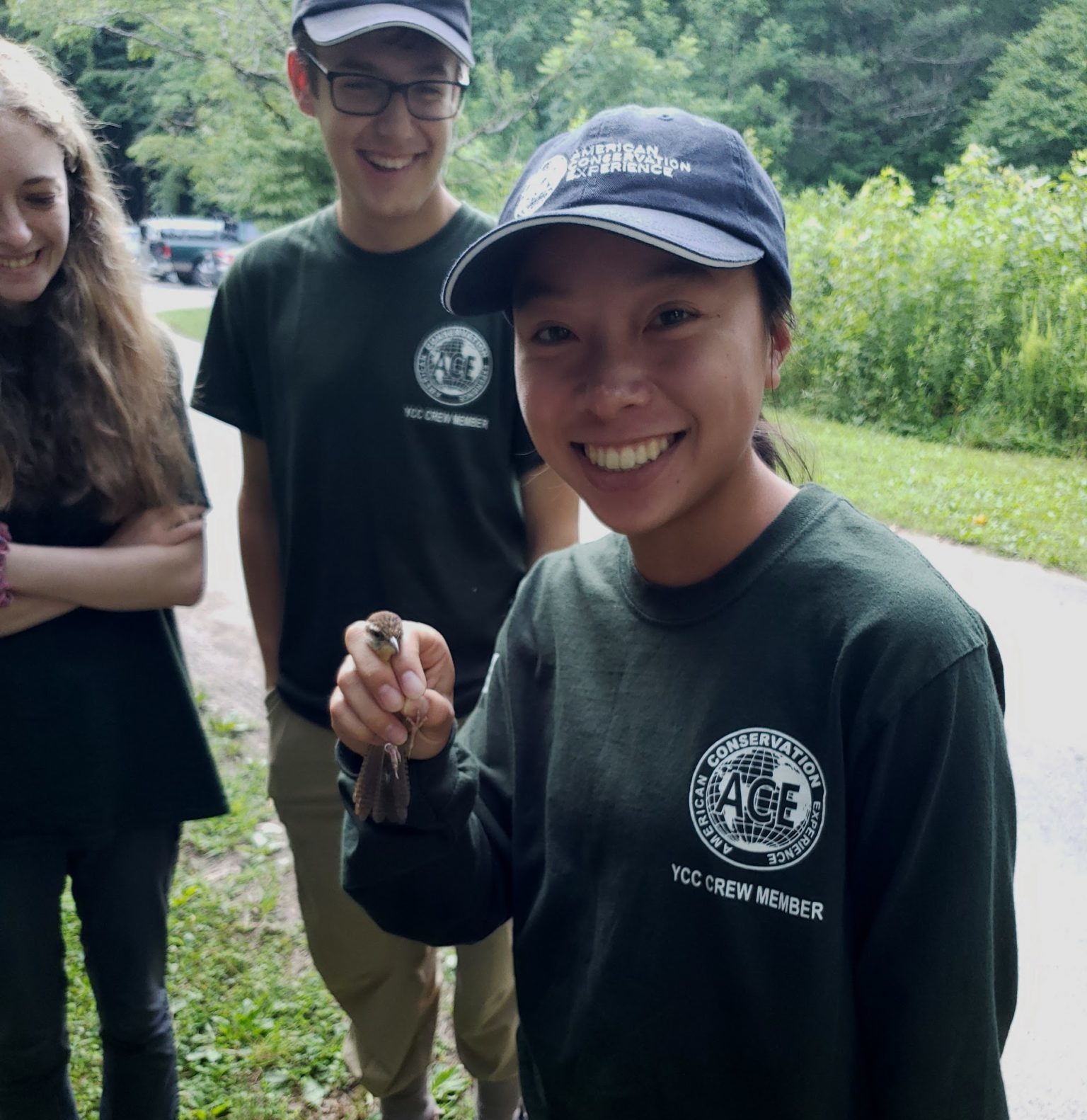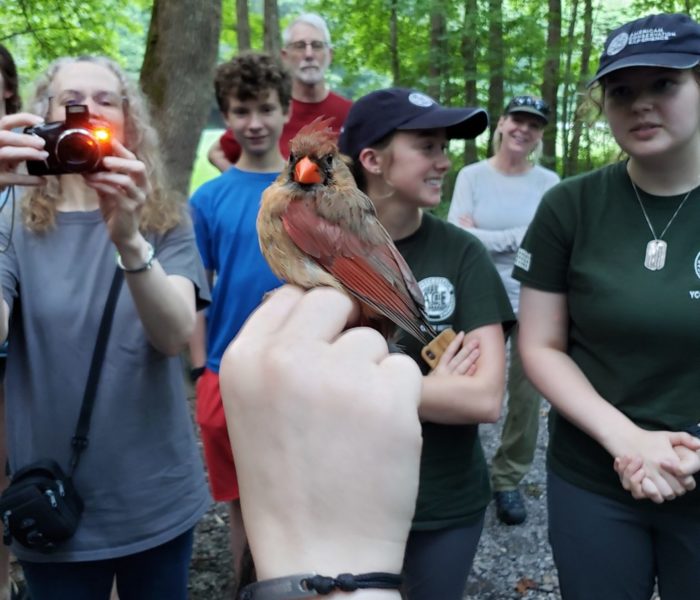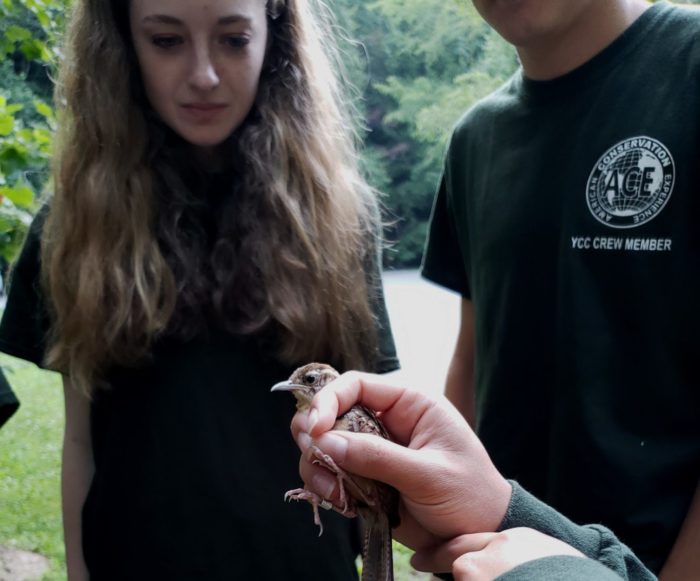GSMNP high school summer interns spent six weeks learning about the resources of the park and the work of the rangers. Noelle Beswick writes about the interns’ experience learning to catch and band birds for monitoring bird populations.
by Noelle Beswick
Maryville High School
Maryville, Tennessee
Bird banding called for yet another early morning for the interns.
The hours before sunrise prove to be the best time to catch birds, so we drove to Great Smoky Mountains Institute at Tremont to catch a glimpse of these creatures in action.
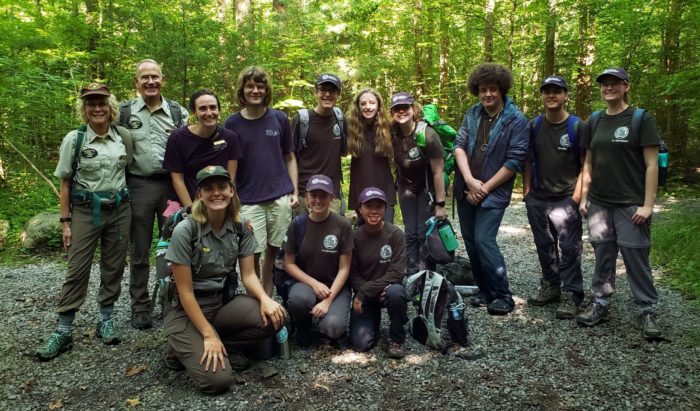
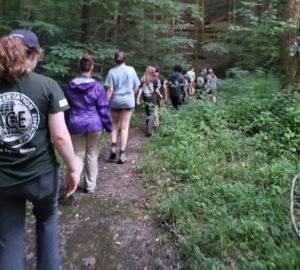
Catching birds
Bird banders set up hairnet-thin nets, called Mist Nets that are barely visible to the human — and bird — eye.
Every forty minutes, the nets are checked.
Because banders want to gather birds from different locations, the nets are scattered across the area, often requiring a hike to reach them.
Banding
Once collected, birds are measured, weighed and banded.
Banding allows people to monitor bird populations and track the birds’ movements through the seasons and years.
Handling
Banders use multiple grips to ensure that the birds are comfortable yet secure.
The Photographer’s Grip is ideal for displaying the bird for viewing purposes. The Photographer’s Grip allows more freedom for the bird to move and possibly peck at the bander’s hand.
The Bander’s Grip is used for banding and recording data.
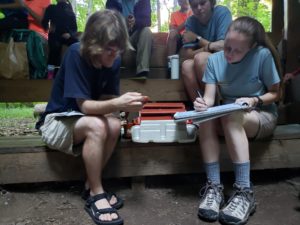
Fun Facts
- Mama birds have a brood patch, an area where feathers have fallen off, revealing skin, so they can warm their eggs more easily.
- Juvenile male birds can have duller colors, thus, looking similar to females.
- Fledglings sometimes have fluffy, lower quality feathers due to malnourishment during their time in the nest.
Release
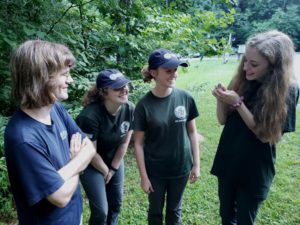
After all data is collected, the birds are released.
If the bird is a mother that has eggs, it is transported back to its original site.
Reflection
Bird Banding was an experience I have never had the opportunity to enjoy before.
While it required early mornings and pitch-black drives, it proved to be an unforgettable experience.
I was amazed at how many families were dedicated to participating in this event.
Their passion for protecting birds formed a community in itself. I especially loved the inquisitiveness of the educators and the visitors.
I could tell they sincerely loved their park and valued its resources. They loved observing, teaching and learning.
Above all, bird banding revealed another way the national park preserves and protects the wildlife, and it offered another job option for the future.
****
For six weeks, the interns worked with rangers, Teachers in the Parks and volunteers on projects in the park to learn more about GSMNP and to get a feel of what being a park ranger is like.
Sixteen students from North Carolina and Tennessee participated in the program this summer.
Friends of the Smokies has helped support the GSMNP High School Internship Program for 17 years, initially providing the salaries for the interns and then helping fund the program staff salaries. The program is funded in part by the American Conservation Experience (ACE).
Several of this summer’s interns have written guest posts and compiled photos of their experiences, which will be published on the FOTS blog. The photos in this post were taken by the Tennessee interns.
A special thanks to Ranger Jessica Snow, who coordinated the Tennessee interns, and Ranger Erin Lamm, who coordinated the North Carolina interns, for their assistance with the interns’ blog posts.
You can support the GSMNP high school summer internship program or support other education programs that FOTS funds, including Teachers in Parks, Parks as Classrooms, the Kathryn McNeill Endowment that funds an education specialist, and the Park Liaison program at the Cherokee School.
